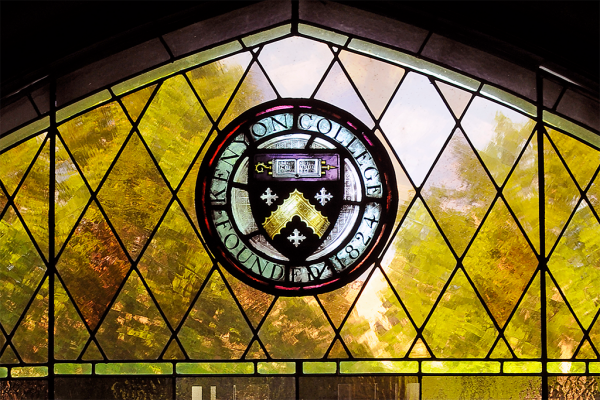Why Whiteness?

Note: This post was originally published on The Kenyon Thrill and is the second in a series of reflections by President Sean Decatur on race, identity and the role of liberal arts institutions in exploring complex and controversial topics. Read the first installment here.
In light of media reports in recent days, several alumni, parents and other friends of the College have asked me a series of questions: “Why does the campus need a study group on whiteness?” “Can’t you and the campus move beyond obsessions with race and diversity?” I believe that the cursory stories in the media have it wrong, and I don’t think we can address the disconnect without serious examination of issues of race in the U.S. and how that influences life on campus.
The best way to answer these questions about the new whiteness discussion group at Kenyon may be to let folks inside my email inbox, or the voicemail box of my office. The past few days have been days of controversy for the College, pushing against the notion that inclusion and free expression are in opposition. As the leader of this institution I expect and welcome criticism of my decisions and leadership, even pointed criticism. The majority of letters that have come in have been thoughtful, focused on substantive concerns about the College. But in between those comes an occasional message like the one waiting for me this morning, with the subject line “Hey n*****.” Or the caller into the office who first identified that I am black, before threatening to tear down this College “brick by brick.” While these messages and others received around campus in the past two days likely come from outside the Kenyon community, they are vivid reminders that we are not as insulated from the world as we imagine.
Like many people of color, I have come to expect that there are those who will inevitably attempt to reduce us to our race, and at times in a transparently hateful way. In her brilliant essay “How It Feels to Be Colored Me,” Zora Neale Hurston penned the beautiful statement, “I feel most colored when I am thrown against a sharp white background.” We are kidding ourselves if we do not recognize that, for some members of our Kenyon community, that is a feeling of daily life; it may not always be on the top of one’s mind, but that feeling is there.
To many white Americans, the concept of race is best described by the allegory made famous by David Foster Wallace’s Kenyon commencement address “This is Water.” To some in our community, the concept of race, or the concept of whiteness, is indeed the water — it goes unnoticed or unfelt. Indeed, that underscores the desire of some people, at Kenyon and elsewhere, to critically examine what it means to be white. The goal of the whiteness discussion group is not to make whites feel guilty, or to somehow subjugate or brainwash whites into submission. Nor is it to suppress free speech in the name of a politically correct orthodoxy. Rather, it is for white members of the community to do the work needed to begin to see the water. For those who say that this type of group or activity has no place in a liberal arts college, I respond that this is exactly the opposite: Rigorous examination of one’s place in the universe, working to gain new insight and understanding, these are precisely the types of activities that should happen at a college.
There is another section of Hurston’s essay that is worth a close read. She describes the moment when a white customer comes into an all-black jazz club and that person takes on the role of ethnographer (something that Hurston, herself an anthropologist, knew quite well). Here the challenge is that the “colored” in the group are expected to perform or explain their race. This is not inherently bad: we all learn from each other regularly, and indeed the purpose of bringing people from a range of backgrounds together on the same campus is that it greatly increases the opportunities to learn with and from people different than yourself. But this should not necessarily be the only way that whites learn about race.
This is the point that has been most distorted and misinterpreted in media reports about the whiteness discussion group. The group is not some form of a gag order on whites from talking to people of color, as if in some sort of hazing ritual. Rather, the group asserts that relying on people of color to be the “experts” on topics of race can be intimidating to some whites and can result in silencing discussion as people become anxious about saying “the wrong thing,” something that may contradict or offend the “expert.” It also puts substantial pressure on the students of color, who often feel they are regularly burdened with the task of being an expert teacher or witness. Instead, this multiracial group of students and community members is making a commitment to develop their own insights and voices and to speak honestly in a setting where they will not be judged for contradicting or offending. In a cultural moment when discussions of race are often stifled and silenced, they are aiming to create a space for honest discourse on a difficult subject.
In that famous commencement speech, Wallace stated: “The point of the fish story is that the most obvious, important realities are the hardest to see and talk about.” I applaud the efforts that students, faculty and staff at Kenyon are making to make the water visible and take on the difficult topics.
